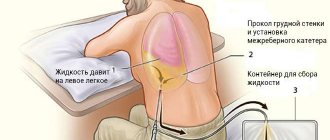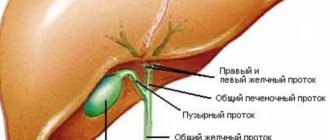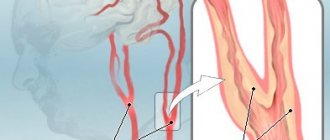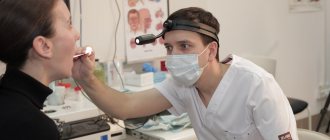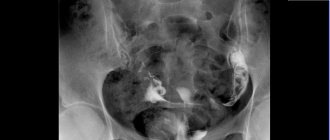What is keratosis?
Let's start with the fact that cutaneous keratosis is a collective term that refers to a whole group of non-inflammatory diseases associated with impaired keratinization of the skin. Clinically, the process can manifest itself as slight peeling or the formation of thickened horny layers. There are follicular, seborrheic, and actinic keratoses.
Keratosis follicularis is characterized by the formation of horny plugs at the openings of hair follicles.
Seborrheic keratoses are plaque-like or nodular formations with a warty surface, covered with dry, horny masses that are flesh-colored, brown, or black in people over 50 years of age.
Actinic keratosis appears on exposed areas of the skin, initially appearing as bumpy, rough skin that eventually develops into rough, scaly patches ranging in color from normal skin tone to reddish brown. They are often limited in size and vary in size.
Solar lentigo
Solar lentigo in the photo above.
These are flat, defined pigment spots that appear on sun-exposed areas of the body. Lentigo is characterized by an increased accumulation of melanocytes. There are two types of lentigo:
- Sunlight is a sign of skin damage from ultraviolet radiation
- Senile - usually appears in old age
For what reasons do acquired keratoses occur?
The main cause of almost all keratoses is said to be chronic exposure to ultraviolet rays. In the literature, all changes associated with sun exposure are often grouped under the term dermatoheliosis. Thus, the damaging effect can affect the epidermis (senile, actinic keratosis), dermis (solar elastosis), blood vessels (telangiectasia), sebaceous glands (porokeratosis) and melanocytes (dyschromia).
The effects of sun damage to the skin gradually accumulate as the total amount of time spent exposed to UV rays increases year after year. This leads to the fact that the peak incidence of this nosology occurs at the age of 50 years and older.
However, nowadays, actinic keratosis has become much more common in young people. As a rule, these are people of the first and second phototypes (with fair skin, blond or red hair, and blue, green or gray eyes). There is a high likelihood of developing keratoses in young people exposed to sunlight for a long time.
The incidence is slightly higher in men because they tend to use little or no sun protection. Clinical studies estimate that about 60 percent of predisposed individuals by the age of forty have at least one element of actinic keratosis. Some experts believe that almost everyone over the age of 80 suffers from some form of keratoses.
In addition, persons whose immune defenses are weakened by chemotherapy, extensive exposure to x-rays or a number of industrial chemicals, patients with AIDS, patients who have undergone organ transplants, patients with disorders of the nervous and endocrine systems, etc. less able to combat the effects of radiation and, therefore, more prone to developing keratoses.
Forecast and prevention of the disease
The prognosis of the disease depends on the time of initiation of treatment. However, in order to avoid relapses, it is necessary to follow certain recommendations.
The following measures can be taken as prevention:
- use moisturizing creams;
- eat well so that food provides the skin with all the necessary “building” elements;
- limit exposure to direct sunlight to reduce exposure to ultraviolet radiation;
- when in the sun, use sunscreens (ointments and creams) with a high SPF level;
- When working with chemicals, you must use appropriate skin protection.
Keratosis is a skin condition that requires constant monitoring. In addition to an aesthetic defect, sometimes formations can develop into malignant tumors. And to prevent this, it is necessary to undergo regular examinations and monitor changes in the skin.
What are the symptoms of this disease? In what areas do they appear most often?
The patient, as a rule, may miss the onset of the disease and not pay attention to small irregularities, roughness, sometimes invisible to the eye, on the skin of the cheeks, bridge of the nose, ears, forearms, upper arms and forearms, back of the hands, back of the neck, upper chest, even on the scalp. Moreover, actinic keratosis can also develop on closed areas of the body that have been repeatedly exposed to the sun.
Developed actinic keratosis is represented by neoplasms from 0.1 cm to 2 cm or more. Over time, the spots become red or brownish in color and flake, and may rise above the skin in the form of growths. We most often see such patients at clinic appointments. Actinic keratosis usually develops very slowly and usually does not cause any discomfort other than aesthetic ones. Itching or burning in the affected area usually occurs in areas of long-term and severe keratinization. Most often, elements of skin keratosis develop slowly, but can disappear and reappear with repeated exposures that damage the skin. They can become inflamed and, in rare cases, even bleed.
Nevi (aka moles)
My first article about moles is on the website of the PLASTES center https://www.plastes.ru/nevus.html Here I want to pay more attention to the issues of additional diagnostics and the safety of removing pigmented skin tumors.
We will immediately remove the questions about why moles appear on the skin and why melanomas arise from them from consideration as uninteresting and, in our case, idle. Let's start the conversation right away from the moment the mole for some reason began to bother me.
Here is a typical example of a letter from my correspondence with patients:
“...I don’t know what to do and what to do? Very scary. I am 33 years old. And all my life I have lived with a mole about 1 cm in diameter. It is swollen and with villi, almost black in color, but with uneven edges. On the thoracic region. Never bothered me. And starting in June of this year, the mole itself began to itch around the mole, as if it was pulling inward. All this is tolerable. I turned to our oncologists, they said that as long as it looks like a benign tumor, it should be removed (literally from the head physician of the N-sky oncology dispensary). The consultation lasted no more than 5 minutes. Visual inspection, without any equipment. I asked to prescribe tumor markers, they refused, they said we didn’t see any point. Nothing was really explained. Very scary. I read about melanoma. What should I do? The general condition is strange: it seems like a cold, but something is wrong. A little later I was told that at the consultation they identified my mole as a congenital pigmented nevus. Are there any guarantees that the outcome of the surgical intervention will be good??? I was really very frightened by the stories of friends that people died after removing a mole...”
Well, what can I say? I perfectly understand the state of mind and fear of this girl. There are several such letters a day, and such patients have to be constantly reassured and explained the same thing.
The most important thing is to understand: until the tumor is removed and subjected to histological examination, there will be no diagnosis!!! And no additional research methods (tumor markers, dermatoscopy, CT, PET, etc.) will ever give us a definite answer to the question of whether it is melanoma or not.
Another question is how to remove the tumor to minimize the risk of adverse consequences. This is where the main “terrible secret” lies - in the method of removal. In order not to let my thoughts wander, I will immediately reveal this secret. If I have even the slightest suspicions and doubts, I insist on COMPLETE SURGICAL EXCITION OF THE NEOPLASM .
Now I will explain why. I completely agree that any intervention in a tumor can lead to rapid uncontrolled progression (growth of the tumor itself and the appearance of metastases). That is why ALL SUSPICIOUS MOLES SHOULD BE REMOVED SURGICALLY, IMMEDIATELY AND COMPLETELY WITH THE HEALTHY SKIN AROUND!!! For exactly the same reason, IF THERE ARE SUSPECTS, YOU CAN NOT DO A PARTIAL BIOPSY, YOU CANNOT DO ELECTROCOAGULATION OR LASER REMOVAL!!!
See how simple everything turns out to be. That's where all these scary stories come from. The doctor simply underestimated the degree of danger, did not attach importance to suspicious symptoms and, instead of complete excision, performed coagulation (with electricity or laser - it makes no difference). The tumor was “disturbed” and began to grow. If the same tumor had been immediately and completely removed, then no further unfavorable sequence of events would have occurred.
That's where all these scary stories come from. The doctor simply underestimated the degree of danger, did not attach importance to suspicious symptoms and, instead of complete excision, performed coagulation (with electricity or laser - it makes no difference). The tumor was “disturbed” and began to grow. If the same tumor had been immediately and completely removed, then no further unfavorable sequence of events would have occurred.
However, please note that I am not saying that complete excision is an absolute guarantee of safety. Even after complete surgical excision, the tumor can progress into metastases. But only if it really was melanoma. As you already understand, it is possible to find out whether it was melanoma or not only after a histological examination.
Next, I will present several cases when I insisted on complete surgical excision of pigmented tumors.
| In general, nothing unusual. This is what “calm” moles look like under a microscope. I posted this illustration to show that a dermatoscope is not the most accurate diagnostic device. The indication for excision in this case was a feeling of discomfort and itching in the area of the mole. Histological conclusion - pigmented nevus. |
| A young woman has a pigmented nevus in the décolleté area. Over the past few months, he has noticed a change in color (it has become more intense) and an increase in the size of the mole. Even these two signs are enough to make a diagnosis of “dysplastic nevus” (restless mole) and surgical excision. And, despite the danger of a rough scar, I had to have surgery. Histological conclusion: dysplastic nevus. That is, pre-melanoma. The result of the operation is shown in the image on the far right. There is no more tumor. There are also dangers of degeneration into melanoma. I don’t know what would have happened if the operation had not been performed or the woman had applied later. I also cannot say what would have happened if electrocoagulation had been performed instead of surgery. Perhaps this would become a provoking factor for tumor transformation. |
| This case also illustrates well my approach to choosing a method for removing “moles.” This is the spot that appeared on the young man’s skin on the plantar surface of his foot. It appeared suddenly; there was nothing in this place before. This spot does not cause any discomfort. What to do? If you think that by looking through a deramtoscope, I will immediately make the correct diagnosis - you are mistaken. I have never seen such a picture before. Guided by the principle of cancer vigilance, which says “if the diagnosis is not clear, think about cancer,” I insisted on surgical excision. The histological answer was unusual - pinpoint hemorrhage. Apparently, a microtrauma occurred, which the patient did not even remember. You may think that the operation was performed in vain. To which I will answer your question: what if it turned out to be melanoma? Once again, I will note the main thing - we will never know the exact diagnosis until we remove the tumor. And in such situations it must be removed immediately and completely. |
These are just a few examples from my practice. If I have time, I will add to this gallery. Finally, a few points about moles:
- The majority (99.9%) of moles do not pose any danger to life or health. They can be safely removed in different ways: electro- or laser coagulation, surgery. It all depends on the size and location.
- If a mole bothers you (no matter how), be sure to see an experienced doctor. In such cases, it is preferable to perform complete surgical excision with mandatory histological examination.
- You can ask questions at
Are there any new developments in this direction on the world market?
Well, for example, from 1998 to the present, the Australian biopharmaceutical company Peplin has been studying the topical treatment of actinic keratosis with the drug Ingenol Mebutate, which is the first in a new class of formulations and is derived from milkweed juice. This ingredient has a long history of traditional use for a variety of skin conditions, including the topical treatment of skin cancer and precancerous skin lesions. The company plans to enter the third phase of the trial soon.
Diagnostics
A dermatologist will help you determine what type of tumor it is, as well as select treatment methods. Differential diagnosis is very important - keratoses resemble other skin diseases. For this purpose, the following is carried out: - Visual inspection. — Laboratory studies - histology is carried out during surgical treatment and if there is a possibility of keratoma degeneration. — Instrumental diagnostics – dermatoscopy (examination under magnification), biopsy (sampling of material), ultrasound examination.
What are destructive (ablative) methods?
All skin tumors must be examined by a dermatologist before removal due to the risk of skin cancer. Treatment performed in a timely manner will help prevent the development of basal cell carcinoma (BCC) or squamous cell carcinoma of the skin (SCC).
- Cryosurgery using liquid nitrogen is the most common method for treating keratoses, but is not suitable for hyperkeratotic lesions. Liquid nitrogen is sprayed directly onto the affected areas of the skin using a cryodestructor or applied using the “reed” method (application with a cotton swab on a wooden stick). Cryosurgery is easily performed on an outpatient basis, shows excellent cosmetic results and is well tolerated.
- Radio wave, electro- and diathermo-laser destruction.
- Photodynamic therapy involves the application of a photosensitizing agent, methyl aminolevulinate, and then exposure to light of a specific wavelength, which leads to tissue necrosis. Photodynamic therapy is well tolerated and has excellent cosmetic results.
- Surgical removal . The surface of the skin is cleaned with a special instrument (curette).
- Chemical peeling:
- Jessner's solution (resorcinol, lactic and salicylic acids in ethanol);
- trichloroacetic acid solution 35%.
- Dermabrasion . The affected areas of skin are removed using a fast-moving abrasive brush.
- Phototherapy (IPL) and fractional photothermolysis - coagulation of keratosis elements using light energy. Suitable for the initial manifestations of actinic keratosis.
Preventive measures
After removing the tumor, it is important to protect the affected area from external influences and speed up the healing process. Dermatologists prefer to prescribe Levomekol or Solcoseryl.
When surgically removing a growth, the wound requires daily treatment with antiseptics, for example, chlorhexidine, followed by the application of antibacterial ointments and the application of a sterile bandage.
The patient is recommended to reconsider his lifestyle. You should give preference to natural, easily digestible foods with high vitamin A (liver, pumpkin, dried fruits). The diet should include fresh vegetables and fruits. It is advisable to give up bad habits or reduce your consumption of alcohol and nicotine.
It is important to avoid prolonged exposure to the street during periods of increased solar activity (in the summer from 10 a.m. to 4 p.m.). Rest in the open sun should be accompanied by the application of sunscreen and a wide-brimmed hat.
Problems of the body of an internal and external nature are less likely to affect people with strong immunity. Middle-aged people are advised to maintain a sleep schedule, not overwork, eat right and perform breathing and physical exercises. If skin changes are detected, you must go to the hospital and clarify the diagnosis of pathologies.
